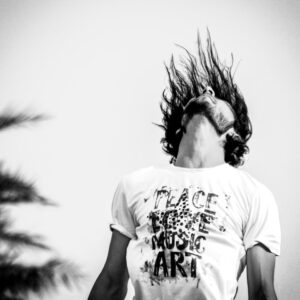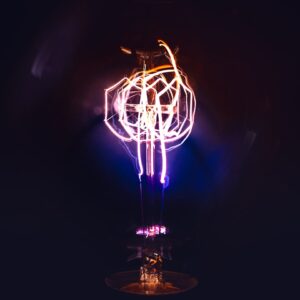The opium aesthetic has its roots in the opulent and decadent lifestyle of the 19th century, particularly in Europe and Asia. Opium, a highly addictive narcotic derived from the opium poppy plant, was widely used during this time for its pain-relieving and euphoric effects. The opium dens of Shanghai and other major cities became notorious for their luxurious and exotic atmosphere, attracting artists, writers, and socialites seeking inspiration and escape from the constraints of society.
The opium aesthetic is characterized by a sense of dark allure, mystery, and sensuality. It is often associated with rich, jewel-toned colors, intricate patterns, and lavish textures. The opium aesthetic also embraces elements of Eastern mysticism and exoticism, drawing inspiration from the art, architecture, and fashion of the Far East. This fusion of Western decadence and Eastern exoticism created a unique and intoxicating aesthetic that continues to captivate and inspire to this day.
Key Takeaways
- Opium Aesthetic originated from the opium dens of 19th century China, characterized by a dark, mysterious, and seductive allure.
- The elements of dark elegance in Opium Aesthetic include rich, deep colors, luxurious fabrics, and ornate details that exude a sense of decadence and mystery.
- Opium Aesthetic has influenced fashion and design with its dramatic and exotic motifs, seen in the use of velvet, brocade, and intricate embroidery in clothing and home decor.
- Art and literature have explored the dark beauty of Opium Aesthetic through themes of addiction, escapism, and the allure of the forbidden, creating a sense of romanticism and danger.
- Opium Aesthetic has an intriguing appeal in pop culture, with its association with rebellion, sensuality, and a fascination with the exotic and forbidden.
- Embracing Opium Aesthetic in interior design and home decor involves creating a space that exudes a sense of mystery, luxury, and decadence through the use of dark colors, rich textures, and ornate furnishings.
- Opium Aesthetic has faced controversy and criticism for romanticizing drug culture and perpetuating harmful stereotypes, leading to debates about its appropriateness and impact on society.
The Elements of Dark Elegance
The opium aesthetic is defined by its dark elegance, which is characterized by a sense of mystery, sensuality, and decadence. This aesthetic is often associated with rich, deep colors such as burgundy, emerald green, and sapphire blue, as well as luxurious fabrics like velvet, silk, and brocade. Intricate patterns such as paisley, damask, and chinoiserie are also common in opium-inspired design.
In addition to its opulent color palette and sumptuous textures, the opium aesthetic often incorporates elements of Eastern mysticism and exoticism. This can be seen in the use of ornate furniture, intricate carvings, and elaborate motifs inspired by Asian art and architecture. The opium aesthetic also embraces a sense of theatricality and drama, with an emphasis on mood lighting, lush draperies, and ornate accessories.
The Influence of Opium Aesthetic in Fashion and Design
The opium aesthetic has had a significant influence on fashion and design, inspiring designers to create collections that capture the dark allure and sensuality of this aesthetic. In fashion, opium-inspired designs often feature rich, jewel-toned colors, luxurious fabrics, and intricate embellishments. Designers such as Alexander McQueen, John Galliano, and Jean Paul Gaultier have all drawn inspiration from the opium aesthetic, creating collections that exude a sense of dark elegance and decadence.
In interior design, the opium aesthetic has also made a lasting impact, with designers incorporating elements of Eastern mysticism and exoticism into their work. This can be seen in the use of ornate furniture, intricate carvings, and elaborate motifs inspired by Asian art and architecture. The opium aesthetic has also influenced the use of rich, dark colors and sumptuous textures in interior design, creating spaces that exude a sense of mystery and sensuality.
Exploring the Dark Beauty of Opium Aesthetic in Art and Literature
| Artists | Literary Works | Themes |
|---|---|---|
| Edgar Degas | Confessions of an English Opium-Eater by Thomas De Quincey | Melancholy |
| Vincent van Gogh | Opium and the Romantic Imagination by Alethea Hayter | Escapism |
| Pablo Picasso | Opium by Jean Cocteau | Sensuality |
The opium aesthetic has long been a source of inspiration for artists and writers, who have been drawn to its dark beauty and sensuality. In art, the opium aesthetic is often characterized by rich, jewel-toned colors, intricate patterns, and lavish textures. Artists such as Gustav Klimt, Aubrey Beardsley, and Alphonse Mucha have all explored the opium aesthetic in their work, creating pieces that capture the mysterious and intoxicating allure of this aesthetic.
In literature, the opium aesthetic has been a recurring theme in works that explore themes of decadence, sensuality, and escapism. Writers such as Oscar Wilde, Charles Baudelaire, and Edgar Allan Poe have all drawn inspiration from the opium aesthetic, creating stories and poems that capture the dark allure and seductive nature of this aesthetic. The opium aesthetic continues to be a source of inspiration for artists and writers today, who are drawn to its timeless appeal and enigmatic beauty.
The Intriguing Appeal of Opium Aesthetic in Pop Culture
The opium aesthetic has had a significant impact on pop culture, influencing music, film, and television with its dark allure and sensuality. In music, artists such as Lana Del Rey, Florence + The Machine, and The Weeknd have all drawn inspiration from the opium aesthetic in their music videos and stage performances. These artists often incorporate elements of dark elegance and decadence into their visual aesthetics, creating a sense of mystery and sensuality that captivates audiences.
In film and television, the opium aesthetic has also made a lasting impression, with directors and costume designers drawing inspiration from this aesthetic to create visually stunning productions. Films such as “Memoirs of a Geisha,” “Moulin Rouge,” and “The Great Gatsby” all feature opium-inspired visuals that capture the dark allure and sensuality of this aesthetic. The opium aesthetic continues to be a source of inspiration for creators in pop culture, who are drawn to its intriguing appeal and timeless beauty.
Embracing Opium Aesthetic in Interior Design and Home Decor

The opium aesthetic has become increasingly popular in interior design and home decor, with homeowners embracing its dark elegance and sensuality to create spaces that exude a sense of mystery and allure. In interior design, the opium aesthetic is often characterized by rich, jewel-toned colors such as burgundy, emerald green, and sapphire blue, as well as luxurious fabrics like velvet, silk, and brocade. Home decor inspired by the opium aesthetic often features ornate furniture, intricate carvings, and elaborate motifs inspired by Asian art and architecture.
In addition to its opulent color palette and sumptuous textures, the opium aesthetic also embraces elements of Eastern mysticism and exoticism in interior design. This can be seen in the use of ornate accessories such as Chinese vases, Japanese screens, and Tibetan rugs that add a sense of drama and theatricality to a space. The opium aesthetic has become a popular choice for homeowners looking to create spaces that exude a sense of dark elegance and sensuality.
The Controversy and Criticism Surrounding Opium Aesthetic
Despite its enduring appeal, the opium aesthetic has also faced criticism for romanticizing drug use and perpetuating harmful stereotypes about Asian culture. Critics argue that the opium aesthetic glorifies addiction and exoticizes Eastern cultures in a way that is both harmful and insensitive. Additionally, some have raised concerns about cultural appropriation in the use of Asian motifs and imagery in opium-inspired designs.
In response to these criticisms, many designers and creators have sought to approach the opium aesthetic with greater sensitivity and awareness of its historical context. This includes engaging in meaningful dialogue about the impact of the opium trade on Asian societies and acknowledging the harmful effects of drug addiction. By doing so, designers can create work that captures the dark allure and sensuality of the opium aesthetic while also respecting the complexities of its history and cultural significance.
In conclusion, the opium aesthetic continues to captivate and inspire with its dark elegance, sensuality, and exotic allure. From fashion to interior design to pop culture, this timeless aesthetic has left an indelible mark on creative industries around the world. While it has faced criticism for its portrayal of drug use and cultural appropriation, the opium aesthetic remains a source of fascination for those drawn to its enigmatic beauty. As creators continue to explore this aesthetic with greater sensitivity and awareness, it will undoubtedly continue to evolve while retaining its enduring appeal.
Discover the allure of opium aesthetic and elevate your style with Awake Clothing’s latest collection. Embrace the fusion of vintage elegance and modern edge, as showcased in their article on opium-inspired fashion trends. Explore how to incorporate opulent textures, rich colors, and intricate details into your wardrobe to capture the essence of this captivating aesthetic. Immerse yourself in the world of opium-inspired fashion by reading their article here.
FAQs
What is opium aesthetic?
Opium aesthetic refers to a style or artistic movement that draws inspiration from the opium dens and opulence of the late 19th and early 20th centuries. It often incorporates elements of decadence, luxury, and a sense of escapism.
What are the key characteristics of opium aesthetic?
Opium aesthetic is characterized by rich, luxurious colors, intricate patterns, and a sense of opulence. It often includes elements such as velvet, silk, ornate furniture, and exotic motifs inspired by Eastern cultures.
How does opium aesthetic differ from other design styles?
Opium aesthetic sets itself apart from other design styles by its focus on decadence, luxury, and a sense of escapism. It often incorporates elements of Eastern exoticism and a fascination with the mysterious and forbidden.
Is opium aesthetic still relevant today?
While opium aesthetic may not be as prevalent as it once was, elements of this style can still be seen in modern design and fashion. Its influence can be found in the use of rich, luxurious fabrics, ornate patterns, and a sense of exoticism in contemporary aesthetics.
Is opium aesthetic associated with drug use?
Opium aesthetic is not directly associated with drug use, but rather draws inspiration from the opulence and mystique of opium dens and the cultural fascination with the East during the late 19th and early 20th centuries. It is important to note that the use of opium and other drugs is not condoned or glorified in opium aesthetic.





